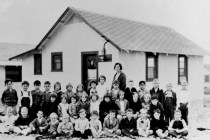Museums take new approach to education
If your childhood memories consist of spending time in the newly coined “family room,” donning your Western gear everywhere but the bathtub, or dancing in front of the TV (your home’s only TV) during “American Bandstand,” then you may have been in a generation that experienced the very beginnings of a redefined method of learning that serves to guide museums into the 21st century: nonformal education.
Infed.org, a nonprofit site hosted by the YMCA George Williams College, which serves as an exploratory database for education, learning and community, offers a great definition of nonformal education as: “any organized educational activity outside the established formal system — whether operating separately or as an important feature of some broader activity — that is intended to serve identifiable learning clienteles and learning objectives.”
Essentially, this is what museums, as well as thousands of other organizations — government or private nonprofit, indoor or outdoor — strive to do through their programming, exhibits and publications.
Another important component that is often portrayed as an entirely different concept is that of informal education, well-defined by Infed.org as, “the truly lifelong process whereby every individual acquires attitudes, values, skills and knowledge from daily experience and the educative influences and resources in his or her environment — from family and neighbors, from work and play, from the market place, the library and the mass media.”
Fortunately, nonformal educators are able to spend less time defining what kind of teaching method they’re using and more time creating and providing meaningful, hands-on programs for children and adults to learn “beyond the classroom.”
Through local groups such as CHOLLA — whose goal is to “correlate educational experiences with state standards, give students direct experiences with the real world, match the educational programs of agencies with school curricula, allow students to interact with professionals and see career opportunities, and introduce students to lifelong voluntary self-directed learning” — educators have created a network of partnerships to ensure the community understands the importance of nonformal learning and that there are hundreds of opportunities to learn something new every day.
Check out the EnviroEdExchange hosted on Nevada’s Children Outdoor Bill of Rights website (http://www.nvoutdoorkids.org/ ) for programs, activities and resources available to the public.
A huge step in the direction of ultimate accessibility has been given to nonformal education folks by embracing our current technology frenzy. Apps such as MuseumTrek allow museums and interpretive areas to run scavenger hunts digitally, utilizing exhibits, text panels, photographs and interactive exhibits that allow players to not only work on team-building skills, but explore, make connections and (sometimes sublimely) learn. Some individuals may even discover that this format for learning leads to developing new interests, better recall and a desire to learn more.
This summer, the museum takes a stab at nonformal education outside the nine-month cycle to bring you our second summer reading program entitled, “Hiss, Roar, Read.”
If you attended or read about the new interpretive panels in Hemmenway Park, you should join us at 10 a.m. Tuesday for Bighorn Bash with the Nevada Department of Wildlife to learn more.
Museum Musings is written and compiled by the staff of the Boulder City/Hoover Dam Museum. For more information, visit, www.bchma.org.


